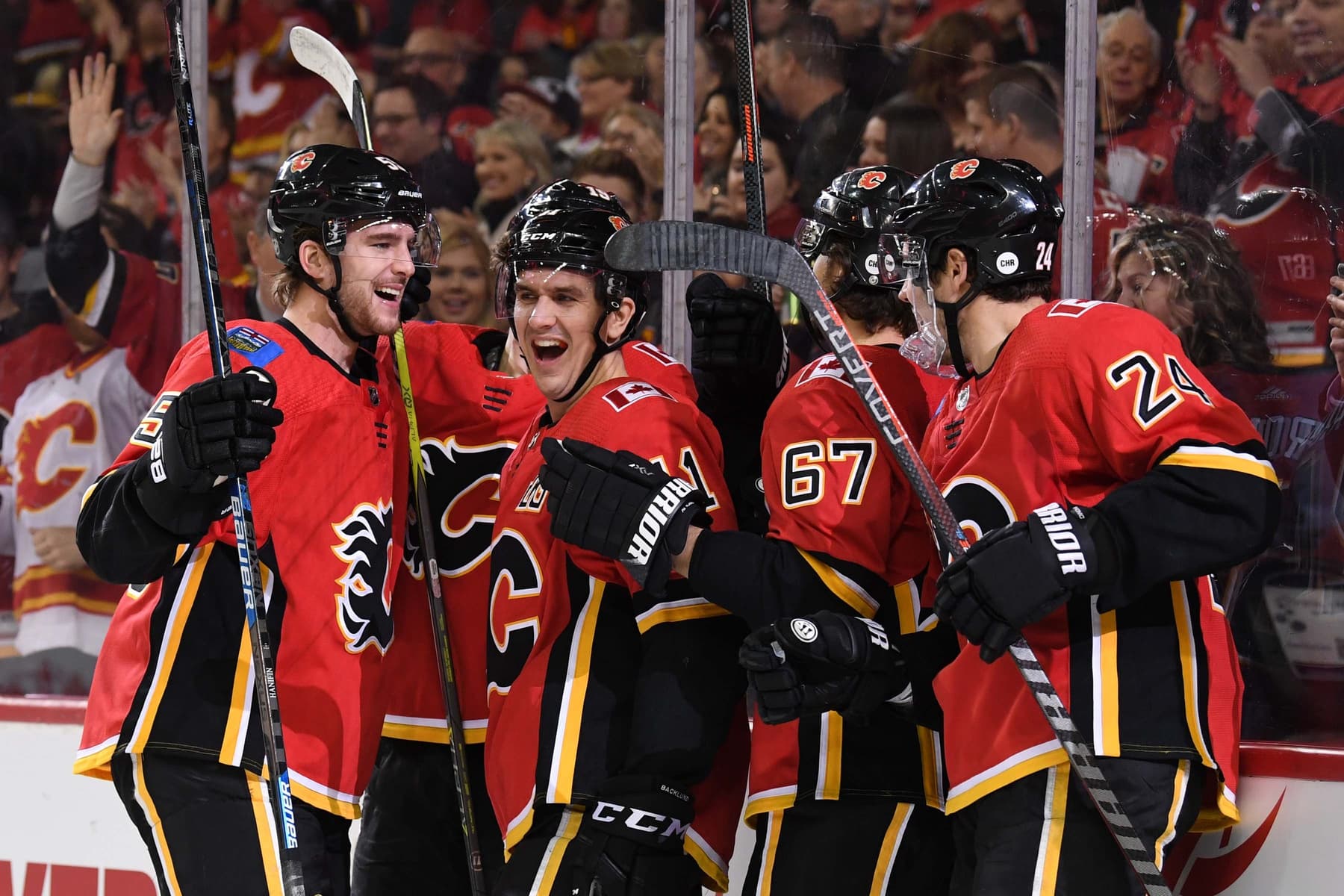Flames’ cap situation heading towards the deadline is pretty complex

By Ryan Pike
5 years agoThe Calgary Flames are among the best teams in the National Hockey League. As the Feb. 25 trade deadline looms, they’re undoubtedly considering ways to maximize this team’s performance down the stretch. But the salary cap – both this year and next – is a big constraint on what they can do.
Forwards
| 2018-19 | 2019-20 | |
| Gaudreau | $6.750m | $6.750m |
| Monahan | $6.375m | $6.375m |
| Neal | $5.750m | $5.750m |
| Backlund | $5.375m | $5.375m |
| Lindholm | $4.850m | $4.850m |
| Frolik | $4.300m | $4.300m |
| Ryan | $3.125m | $3.125m |
| Bennett | $1.950m | RFA |
| Jankowski | $1.750m | $1.750m |
| Czarnik | $1.250m | $1.250m |
| Tkachuk | $0.925m | RFA |
| Hathaway | $0.850m | UFA |
| Mangiapane | $0.705m | RFA |
Defensemen
| 2018-19 | 2019-20 | |
| Giordano | $6.750m | $6.750m |
| Hanifin | $4.950m | $4.950m |
| Brodie | $4.650m | $4.650m |
| Hamonic | $3.857m | $3.857m |
| Stone | $3.500m | $3.500m |
| Prout | $0.800m | UFA |
| Valimaki | $0.894m | $0.894m |
| Andersson | $0.756m | $0.756m |
Goalies
| 2018-19 | 2019-20 | |
| Smith | $4.250m | UFA |
| Rittich | $0.800m | RFA |
A note on LTIR
The most common question we’ve gotten is some variation of “Hey pals, how come the Flames haven’t put Michael Stone on long-term injury reserve?” The short answer is because they haven’t needed the space, though it came close when Mikael Backlund got hurt and Mark Giordano was suspended and they had to swap players back and forth from Stockton to stay under the salary cap.
Teams tend to wait until they have basically zero cap space left before they put a player on LTIR, if only because the benefit of LTIR is defined as the difference of the player you’re putting on LTIR minus your existing cap space. (To maximize the cap relief from Stone’s $3.5 million AAV, it only makes sense to put him on LTIR when they run out of space… and they never quite did.)
The other issue with LTIR is when a player comes off LTIR, your team needs to be cap compliant. In other words: putting Stone onto LTIR and then bringing him back from it would require them to clear out whatever cap space they used when he was out, essentially negating most of the benefits.
This season’s cap outlook
The Flames don’t have a ton of cap space, but they have some flexibility as we get towards the end of the season. They’ve only been carrying 22 players rather than the 23-man limit for the last while, as any cap space a team doesn’t use each day is rolled forward. As a result, the Flames have around $1.14 million in cap space but can add around $5.3 million in cap hits on deadline day because of their accrued cap savings.
Next season’s outlook
The cap next season is projected to be around $83 million. Presuming that the signed NHL regulars all return (plus Troy Brouwer’s buyout), that amounts to a current cap commitment of $66.38 million and leaves around $16.62 million for six or seven roster spots.
- Restricted free agents: Sam Bennett, Matthew Tkachuk, Andrew Mangiapane, David Rittich, Curtis Lazar, Spencer Foo, Kerby Rychel, Brett Pollock, Ryan Lomberg, Alan Quine, Tyler Graovac, Josh Healey, Rinat Valiev and Mason McDonald
- Unrestricted free agents: Garnet Hathaway, Dalton Prout, Mike Smith, Anthony Peluso, Marcus Hogstrom and Matt Taormina
Who’s definitely returning? Let’s pencil in Tkachuk at $8 million, Rittich at $3 million, Bennett at $2 million and a decent backup at $1 million. That leaves around $2.62 million to fill two forward spots – the ones currently held by Hathaway and Mangiapane. It’s doable, but it’s very tight.
Given all of this, don’t expect the Flames to add much (if any) salary for next season at the deadline without clearing out any of their own.
Tkachuk’s bonuses might make things tighter
Tkachuk’s in the last year of his entry-level deal and his contract carries with it $850,000 in what are known as “Schedule A” bonuses. Basically, if he hits certain thresholds for things like goals, assists, points, plus/minus and ice time, he can earn an additional $850,000 on top of his regular salary.
Because teams don’t know if players will hit their performance bonuses, the league allows teams to go over the cap by their bonuses. But whatever teams go over the cap by comes off next year’s cap – meaning that if the Flames spend to the cap and then have to pay Tkachuk’s bonuses, you could subtract the $850,000 from next year’s cap space. And given how tight things look to begin with, that could be a challenge for them.
Recent articles from Ryan Pike





